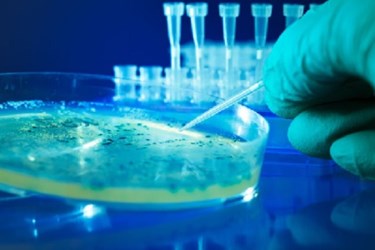Foster Farms Says Salmonella Rates Test Well Below National Benchmark
By Laurel Maloy, contributing writer, Food Online

The chicken producer, riddled with bacterial pathogen issues over the last year, has released its plans to reduce Salmonella infection rates in its chicken production facilities
Foster Farms has been in the news since last year with its link to antibiotic-resistant Salmonella Heidelberg in March of 2013. Then, in January of this year, the company shuttered its doors temporarily due to a cockroach infestation. On July 3, Foster Farms has issued a recall for another round of Salmonella Heidelberg. The Centers for Disease Control and Prevention (CDC), however, is treating this recall as part of the original outbreak.
Dr. Robert O’Connor, one of Foster Farms’ two full-time veterinarians, says the company’s salmonella rates are now well below the industry benchmark of 25%, at just two to three percent. He attributes the reduction to “a lot of trial and error,” as well as “waiting for modifications to kick in.” Foster Farms, while minimizing and largely keeping “mum” about the large-scale salmonella outbreak attributed to its operation, has outlined numerous steps it is taking to battle the outbreak. In addition to cleaning and disinfecting housing facilities for chicks, it is:
- Utilizing acid litter — Acid litter, treated with Alum or aluminum sulfate, is said to reduce pathogen levels in litter and on birds. Available under the brand name Al+Clear, it is available in dry or liquid form. It is also said to reduce ammonia levels, making it safer for birds and workers, as well as improving bird performance. The ‘litter’ is actually the manure produced by the chickens, average litter production being about 20 tons per a flock of 20,000 broilers. Alum is added at varying rates between flocks, though the depth and age of the litter will determine the overall effectiveness.
- Chlorinating water — Chlorine bleach, a poison, was first added to drinking water in the 1900s to battle water-borne diseases, such as cholera and typhoid fever. Ironically, the first heart attack, “coronary thrombosis” was reported in 1912, the beginning of the heart disease epidemic. Dr. Joseph M. Price first made the connection between chlorine and heart disease in 1969 in a book called Coronaries/Cholesterol/Chlorine. His testing included a controlled experiment using one hundred day-old roosters. Each was fed the same type of meal and pure distilled water, though half of the roosters were given one-third teaspoonful of chlorine in each quart of water, starting at the age of 12 weeks. Dr. Price reports that the group given the chlorine became lethargic, huddling in the corners except at feeding time. He says the feathers looked unhealthy and dirty and that the combs, normally bright red, were pale and drooping. The other half, the group not given the chlorine, was the “epitome of vigorous health”. Four months later, the experimental group began to die. 95 percent of those were found to have atherosclerosis, enlarged hearts and had hemorrhaged into their lungs. At the same time, one third of the healthy chickens were sacrificed for necropsy, with not one abnormal aorta found. The experiment was then repeated with the remaining healthy subjects and produced the same results. Little known, this study was brought to light in Oct, 2008, by David Eastham.
- Vaccinating birds five times during production — Vaccination, as described here, can be done in any number of ways. It can be done by intramuscular injection, subcutaneous injection, ocular (in the eye) application, nasally, orally, or in the drinking water. It can also be introduced to the mucous membranes with an abrasive applicator, through a feather follicle, or through a wing stab with specialized needles. The easiest way is through a spray which is sprayed into the air above the chickens. In all methods though, administration must be carefully accomplished for it to be effective. Regardless, a vaccination for salmonella has been available since Dec, 1998; has it not been in use?
- Providing probiotic feed — Probiotic chicken feed is a dietary supplement used to increase the “good” bacteria in the intestinal tract. It is popularly used in the commercial poultry industry, especially following antibiotic treatment. Antibiotics kill both good and bad bacteria, so their use requires replacing the good bacteria with a supplement. Widespread antibiotic use in farm animals is being looked at as the reason for antibiotic-resistant super bugs, such as Salmonella Heidelberg.
- Adding control points to test for salmonella during production and identifying equipment that may need special cleaning — Will be the most effective and are already required by law. Hazard Analysis and Critical Control Point (HACCP) is a system designed to prevent foodborne contamination. HACCP was first enacted in 1999 as part of 9 CFR 417.4. The Food Safety Inspection Service (FSIS) is the governing authority.
If, in fact, Foster Farms has been successful in reducing salmonella contamination, this is a breakthrough of epic proportions which should be shared with the entire poultry producing community. In this report, potentially harmful bacteria were found on 97 percent of store-bought chicken breasts across the U.S. About half of these had at least one type of antibiotic-resistant bacteria; Salmonella was the culprit in 11 percent of these. Since 1998, salmonella contamination rates have varied little, measuring between 11 and 16 percent of samples, even with a vaccination available. O’Connor, also the senior vice president of technical services for Foster Farms predicts, “What we’re doing is going to drive the whole industry to a new standard.” The industry, and the consumer, could certainly use some good news in this regard.
